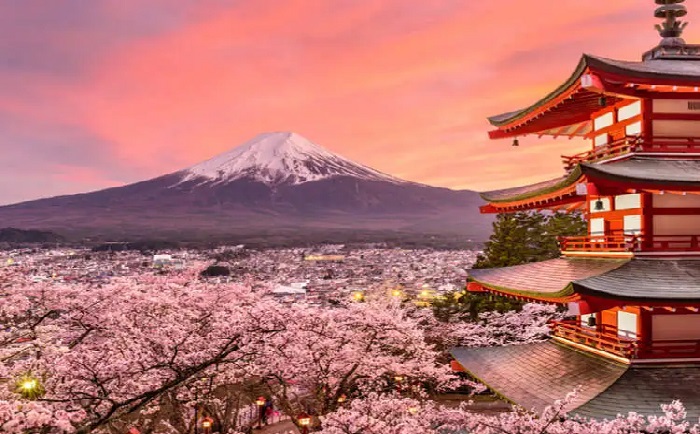Travel
Japan’s Tourism Revival: Balancing Economic Gains and Over Tourism Woes

- Japan is experiencing a significant tourism surge, with over 14.6 million international visitors in the first five months of 2024, driven by a weak yen and unique cultural experiences.
- The influx of tourists is causing challenges such as overcrowding and poor manners, leading some areas to consider measures like dual pricing and higher fares for tourists.
Japan is witnessing a major growth in international tourism this year, with over 14.6 million people between January and May according to the Japan National Tourism Organization. The month of March saw 3.1 million visitors, which is the most significant monthly number since the records started in 1964. If this pattern continues, Japan is poised to beat its previous record of 31.9 million people in the year 2019.
Tourism is now a major economic driver for Japan, with the amount of tourism-related spending inbound reaching 1.75 trillion dollars ($10.8 billion) in the initial period of the year 2024. Tourism is Japan’s second largest export, trailing only automobiles and surpassing other products such as semiconductors according to information obtained from Oxford Economics and Fortune’s calculations. This marks the first time since 2019, that the sector is in such a high place.
Norihiro Yamaguchi, senior Japan economist at Oxford Economics, notes that the tourism industry grew rapidly after Japan started to ease COVID-19 restrictions beginning in September 2022. In April of 2023, all restrictions were removed which led to an accelerated increase in visitors. The weakened yen, which is currently at record lows compared to the U.S. dollar, has increased the demand by making traveling to Japan cheaper for visitors from abroad.
The Power of the Yen
In the year before, one U.S. dollar was worth 140 yen. Today the value is around 161 yen. This is due to the U.S.’s Federal Reserve’s “higher-for-longer” policy on interest rates has helped make it easier for investors to buy the U.S. dollar, making it more attractive to investors, and putting pressure on several Asian currencies, such as the yen. Japan, which has long been fighting deflation, has held off on raising rates of interest, and kept the rate in negative territory while other central banks followed those of the U.S. in hiking rates.
It was a significant change. Japan’s central bank increased interest rates to levels above zero in the month of March 2024 for only the second time in the past 17 years. The move came after significant salary increase agreements reached by Japanese firms. The move is intended to boost consumption in Japan and improve economic growth. But, the weakening yen, though beneficial to exporters, has caused anxiety as the cost of imports reduce profits for companies and reduce consumer spending.
The Instagram Effect
Beyond economics In addition to the economic factors, the increase in Japanese tourism is also driven by the need for exclusive and Instagram-worthy experiences. Jeremy Bek, global head of Japanese travel company Rakuten Travel, emphasizes that people today are looking for more than food and shopping. “It’s the Instagram culture,” Bek states. “It’s about what people see you eat and do. And Japan is beautiful, with so many stunning things to share on Instagram.”
Challenges of Overtourism
In spite of the benefits to economics, the surge of visitors has caused some discontent in Japanese citizens. The overcrowding and rude behavior that some visitors exhibit are causing complaints like the issues that plague some other destinations that are popular, such as Spain or Greece.
In Kyoto, a major tourism city, the mayoral candidate Koji Matsui won the office after protesting against excessive tourism, inciting issues such as tourists with bags crowded into public transport. In Fujikawaguchiko, the town located near Mount Fuji, locals erected barriers to stop an iconic photo location because of tourists’ trash and breaking the law. However, a few determined tourists have begun poking holes through the fence to take the photos they want to capture.
A Balanced Approach to Tourism
In order to manage the increase, certain businesses and attractions have been considering dual pricing which will result in higher costs for visitors. Himeji might consider the possibility of charging visitors from abroad more for visits to the more than 400 years-old UNESCO World Heritage Site, Himeji Castle, to fund the maintenance. Kyoto’s mayor has been pushing for the increase of fares for tourists using public transportation and has also introduced express sightseeing buses which only make stops at tourist destinations that are major.
But, Bek believes that concerns over excessive tourism are mostly confined to the major cities such as Tokyo, Kyoto, and Osaka. Bek says that smaller cities aren’t overcrowded and hotels have adequate inventory that can accommodate foreign and domestic tourists. “They don’t want a repeat of the COVID situation,” Bek states. “If they rely too much on international tourists, and then things get shut down, they’re left without any customers.”
Japan’s boom in tourism is evidence of the nation’s lasting attraction and the enticing appeal of its natural and cultural beauty. While Japan faces the difficulties and possibilities of this boom it is likely that the main focus will be on balancing the two which benefits both the locals as well as tourists.

















































